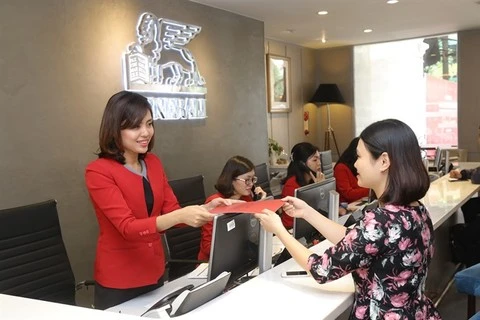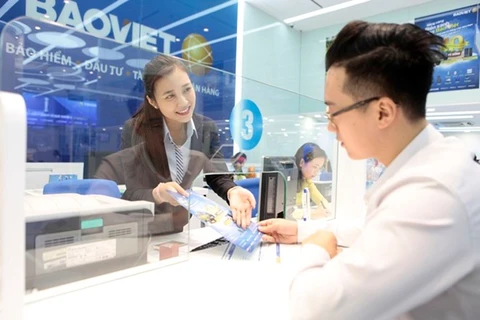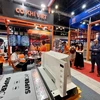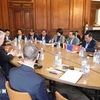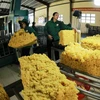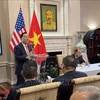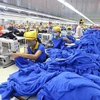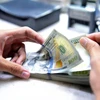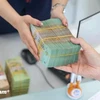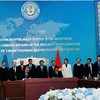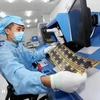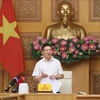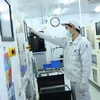 Customers register to join the social and healthcare insurance schemes in the northern province of Dien Bien. (Photo: VNA)
Customers register to join the social and healthcare insurance schemes in the northern province of Dien Bien. (Photo: VNA) Hanoi (VNA) - Most insurance businesses are planning to apply new technologies in management systems and improving customer services, and many also plan to study new products to meet the market’s demand and diversify insurance sale channels, according to a recent Vietnam Report survey.
Just over 82 percent of firms said they aimed to use digital technologies as momentum for growth in the Fourth Industrial Revolution, while 64.7 percent planned to build on two key factors of the Fourth Industrial Revolution, including Internet of Things (IoT) and Big Data.
The survey showed that the total insurance premium in the first quarter of the year of all surveyed companies was higher than the same period last year. Life insurance businesses said their premium in the January-March period rose on average of 159 percent from last year and that of non-life insurance rose 24 percent .
The positive factors in the economy, favourable conditions of the population and insurance firms’ efforts to expand operation scale and improve financial ability contributed to the high growth, Vietnam Report said.
In addition, the foreign ownership at insurance companies which has been rapidly increasing also brought favourable conditions to the market.
The insurance sector is highly concentrated, as the top five leading life insurance businesses accounted for 80 percent of the total market share and top five non-life insurance firms made up 60 percent of the total.
For this reason, insurance enterprises have been facing increasing competitive pressure to occupy market shares, Vietnam Report said.
Many non-life insurance companies such as Bao Viet, PTI, MIC and BIC have applied digital technologies to their insurance payment management. Non-life insurance firms such as Prudential and Aviva, with support from their parent groups, have invested in artificial intelligence with chatbots to support their businesses.
Developing new products has also been a priority as people have paid much attention to their health.
The survey also revealed that 64 percent of surveyed companies would continue to research new products for different customers.
In addition, insurance businesses have been promoting their coverage in the market and expanding their networks by establishing branches and offices, online sales and cooperation with banks through arrangements known as bancassurance.
They have also cooperated with fintech and healthcare service companies to sell their products.
The growing cooperation between banks and insurance through bancassurance has been a major story in the 2017-18 period, with big deals such as Manulife and Techcombank, Aviva Vietnam and Vietinbank and AIA and VPBank.
Bancassurance has seen strong growth in the past two years, becoming an important distribution channel in the insurance market.
In addition, cooperation between insurance companies and fintech has been a new factor in the market. Around 79 percent of insurance companies said they planned to expand cooperation with fintech to develop distribution channels and insurance services on the internet and payment sector.
In the 2011-17 period, the total investment of insurance firms into the economy rose 17.7 percent a year on average. This showed that Vietnam’s insurance market not only is a useful tool to protect investors in most economic sectors such as assets, aviation, credit and healthcare but also a mid-and-long-term capital channel for the economy.
Experts and insurance companies said the Government should continue to enhance support policies to gradually improve transparency in the market. The solutions to improve the business environment and competitiveness of the Finance Ministry have brought positive results in the market.
Insurance firms said they would continue promoting growth, expanding scale while improving product and service quality.
Most negative information about insurance companies in media came from complaints relating to insurance contracts and payment.
Insurance businesses should enhance training on human resources and build dispute-resolving processes to ensure the customers’ rights.-VNA
VNA`

